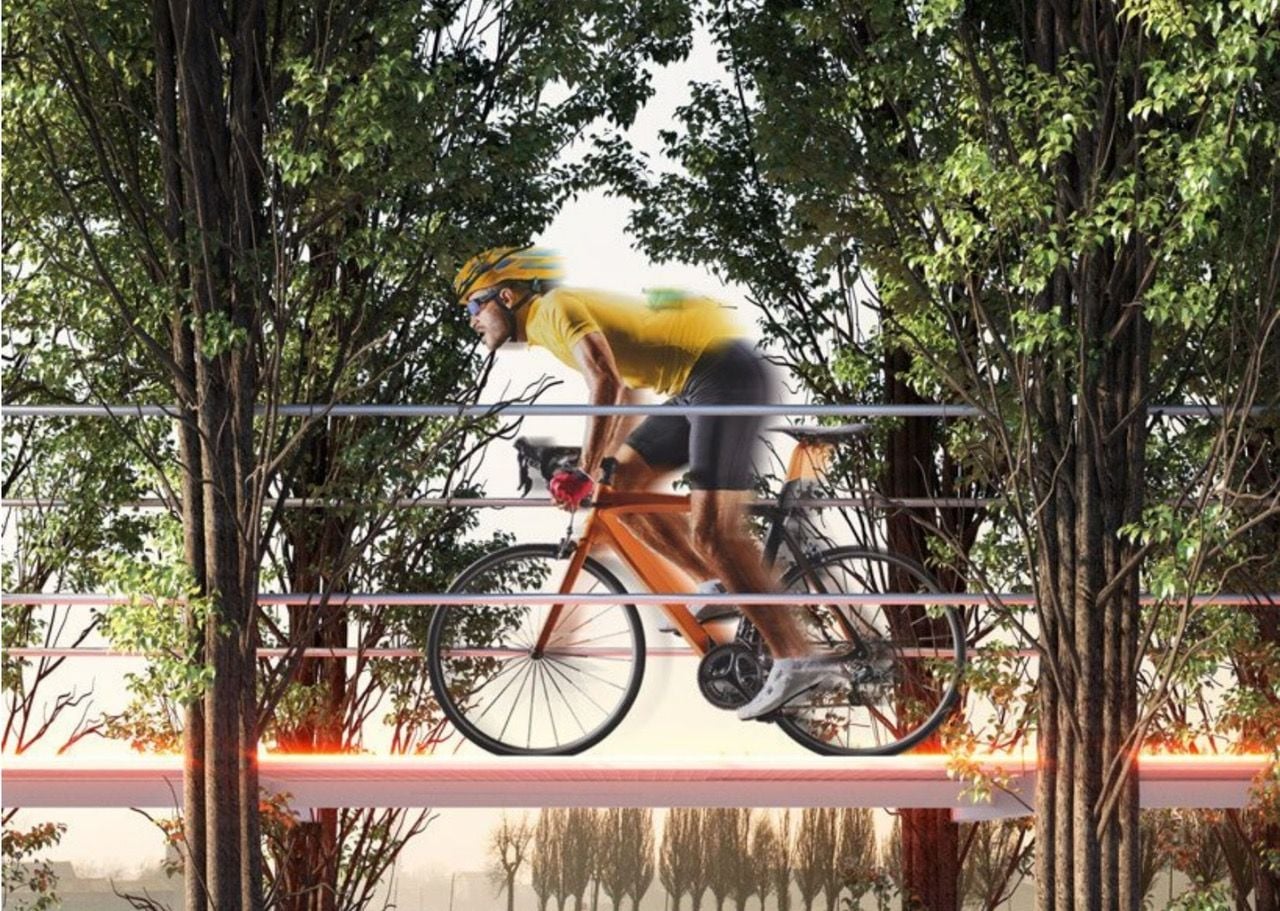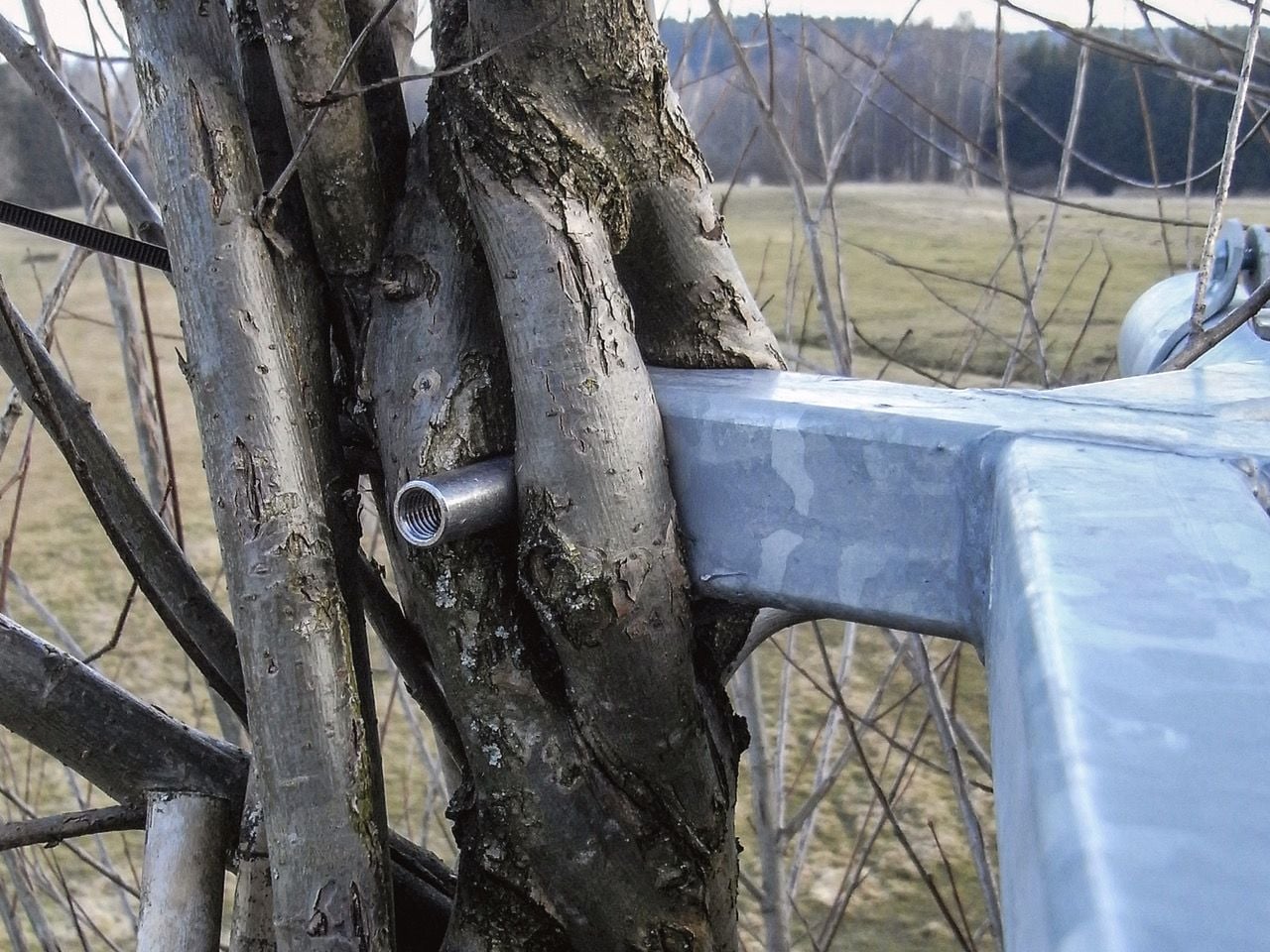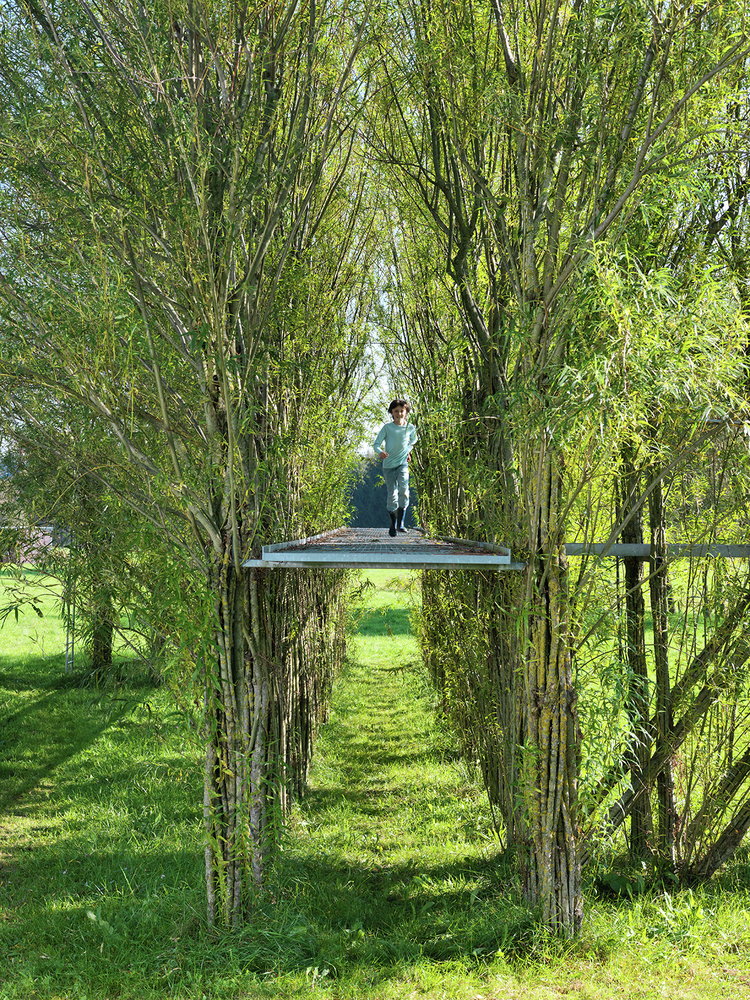Would you ride a bike more often if you were completely separated from vehicular traffic on a separate path? How about if that path was elevated above ground level, winding through treetops?
International design office Carlo Ratti Associati (CRA) has teamed up with Office for Living Architecture (OLA) and non-profit organization GAL Terre del Po to create a dreamy route for cyclists and pedestrians that rests on two parallel rows of plants acting as pillars. The elevated path leads to Sabbioneta, a UNESCO World Heritage Site in northern Italy.

The Tree Path aims to explore sustainable mobility while “blending the natural and the artificial.” The use of a living supportive structure is one of the most remarkable parts of this project. OLA is one of the world’s leading experts in a technique called Baubotanik (“botanic construction” in German), which adapts living trees into architectural elements. The trees are incorporated into all kinds of structures, including full-scale buildings, contributing shade, natural cooling and air filtering, oxygen production, , and a good habitat for local wildlife.


Roughly 1,000 trees will grow around a stainless steel platform and hand rail for this project, building and transforming the path structure over the course of several years. The path makes its ascent in three different levels, rising from the ground to a height of nearly 20 feet to bypass road traffic and waterways, entering Sabbioneta from an elevated perspective. Digital sensors will also be incorporated in the pathway to measure factors like air pollution and make sure all the living organisms along the path are capable of withstanding the structural load. This is envisioned as an “internet of trees,” connected by an artificial intelligence system provided by the Mindicity Urban Intelligence Platform.

“What if one day we could grow architecture like a tree? We are still very far from that future, but we can start exploring the convergence between the natural and the artificial. We can use trees as elements of construction, while leveraging the data from digital technologies to get a better understanding of the surrounding environment,” comments Carlo Ratti, founding partner at CRA and director of the Senseable City Lab at MIT.

The new path will connect Sabbioneta to the existing VENTO Cycle Route, a 435-mile-long bicycle path that runs along the Po River in northern Italy, via the town of Casalmaggiore. For many centuries, the Po River was a major navigable river in Europe, transporting goods and people between Turin in the south and Venice in the north. The Romans even used it to move armies and carry out their conquests throughout Europe. Following the Po honors this cultural heritage and encourages both Italians and international visitors to ride bikes instead of driving. The Tree Path adds yet another destination to explore along the route.

If you’re wondering how living trees could possibly support the weight and strain of the path and its users, check out created by students at the University of Stuttgart. The Tree Path is similar to an elevated pathway they completed, wherein flexible, fast-growing trees like willows are pictured wrapping their trunks around metal structural elements for stability.
The post first appeared on .